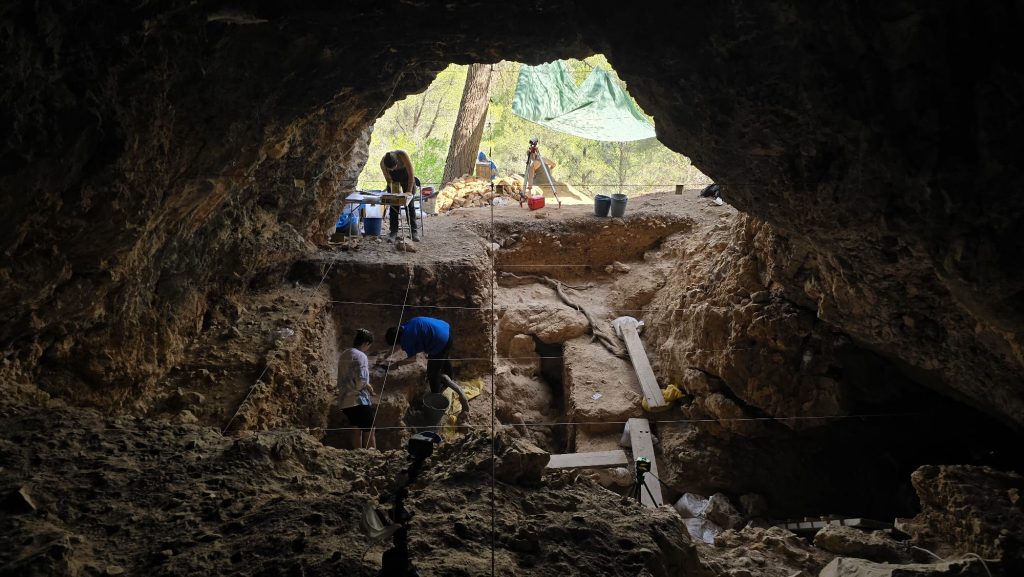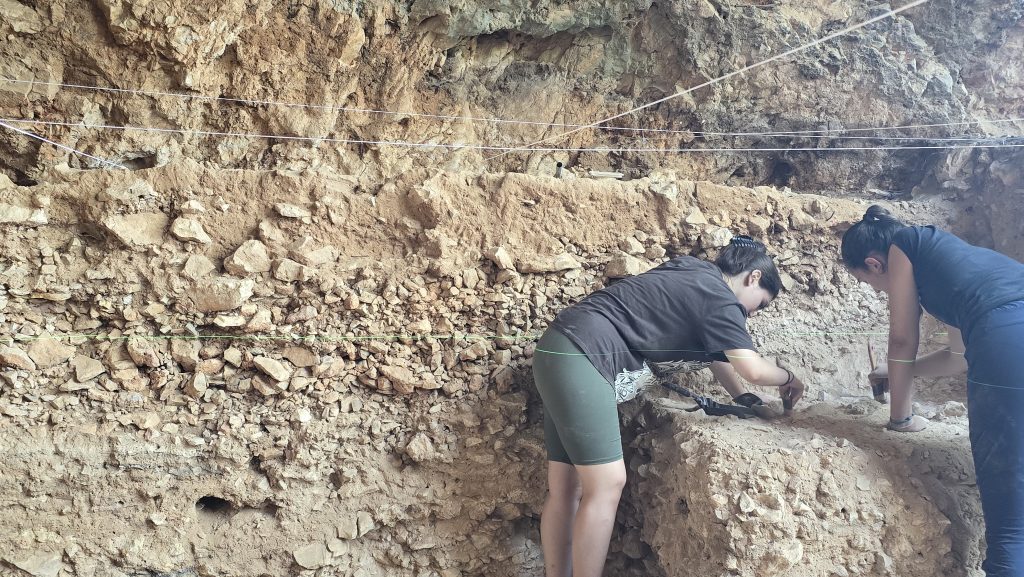This week marks the start of the fifteenth archaeological excavation campaign at the Mousterian site of the AGP5 cave (Aguilón, Zaragoza), which will run until July 31. Discovered in 2010, this site has since yielded evidence of Neanderthal occupations during the Middle Paleolithic, including the recovery of more than 10,000 faunal remains (belonging to animals) and lithic tools.

The excavation is led once again by Carlos Mazo and Marta Alcolea, researchers from the “First Settlers of the Ebro Valley and Archaeological Heritage” research group and the University Institute for Environmental Sciences of Aragón (IUCA) at the University of Zaragoza. This summer’s campaign will focus on excavating level MCP, which represents the most intensively documented human occupation at the site to date. Among the lithic finds are points, scrapers, notches, and denticulates, made from high-quality local flint. Based on their typology, these tools are attributed to the Mousterian industry, which characterizes the Middle Paleolithic in Europe and was produced by Neanderthal groups. This attribution is supported by absolute radiocarbon dating, which places the occupations between 40,000 and 45,000 years ago.
During this occupation, the research team has also uncovered a significant faunal assemblage consisting of thousands of highly fragmented animal bones. Dr. Alicia Sanz-Royo’s study has identified cut marks, percussion marks, and thermal alterations, indicating that Neanderthals were involved in the accumulation of these remains. The most commonly hunted animals include goats, along with lagomorphs (rabbits and hares), deer, and horses. The presence of newborn animal teeth suggests that the deaths occurred during the spring season. The abundance of combustion structures, where mostly montane pinewood was burned, indicates a colder climate than today.

Another objective of this campaign is the collection of sediment samples for dating using optically stimulated luminescence (OSL) to establish a more precise chronological framework for the various human occupations, particularly the earliest ones. This line of research is part of the project “The Last Neanderthals on the Northern Slope of the Iberian Range: Establishing the Chronological Framework of the Archaeological Sequence of the AGP5 Cave (Aguilón, Zaragoza),” funded by the PALARQ Foundation as part of its support program for Spanish Missions in Archaeology and Human Paleontology. The sampling and analysis are carried out in collaboration with Dr. Alicia Medialdea of the National Research Center on Human Evolution (CENIEH).
The fieldwork team includes Marta Rubio, Adriana Capablo, Alejandra Moreno, Alodia Villellas, and Irene Boira, students of the History Degree and the Master’s in Ancient Worlds and Archaeological Heritage at the University of Zaragoza, participating through the UNIVERSA internship program. The excavation is authorized by the Government of Aragón and funded by the Aguilón Town Council and the Spanish Ministry of Science.
The AGP5 cave (Aguilón, Zaragoza) is of great archaeological interest in Aragón, as it provides valuable information on the possible last presence of Neanderthal groups in this territory. Its chronology places it at a pivotal moment in human history, both biologically—with the replacement of Neanderthals by anatomically modern humans—and culturally, with the transition from the Middle to the Upper Paleolithic.

